Yang di-Pertuan Agong
| Yang di-Pertuan Agong of Malaysia | |
|---|---|
| يڠ دڤرتوان اݢوڠ | |
|
Federal | |
 | |
| Incumbent | |
|
| |
|
Muhammad V of Kelantan since 13 December 2016 | |
| Sultan of Kelantan | |
| Details | |
| Style | His Majesty |
| First monarch | Tuanku Abdul Rahman |
| Formation | 31 August 1957 |
| Residence | Istana Negara, Jalan Duta, Kuala Lumpur |
| Appointer | Conference of Rulers |
| Website |
www |
 |
|---|
| This article is part of a series on the politics and government of Malaysia |
|
The Yang di-Pertuan Agong (literally "He Who Was Made Lord",[1] Jawi: يڠ دڤرتوان اݢوڠ), also known as the King, is the monarch and head of state of Malaysia. The office was established in 1957, when the Federation of Malaya (now Malaysia) gained independence from the United Kingdom. Malaysia is a constitutional monarchy with an elected monarch as head of state. The Yang di-Pertuan Agong is one of the few elected monarchs in the world. The concept of an elected monarch is believed to be rooted in the 7th-century kingdoms of Srivijaya and Ayutthaya, where at that time the king was elected from city-states in Srivijaya.
In Malaysia's constitutional monarchy, the Yang di-Pertuan Agong has extensive powers within the constitution on paper. The constitution specifies that the executive power of the Federal government is vested in the Yang di-Pertuan Agong. However, he is bound to exercise this power on the advice of the Cabinet or a minister acting under Cabinet authority. The Cabinet is headed by the Prime Minister, appointed by the Yang di-Pertuan Agong from among the elected members of Parliament. Among them, Yang di-Pertuan Agong has discretionary powers to choose who he wants as the Prime Minister and is not bound by the decision of the outgoing PM if no party has won a majority vote (Article 40). It, however, does not afford him the right and authority to dismiss the PM. He also can dismiss or withhold consent to a request for the dissolution of Parliament (Article 40).[2] He may discontinue or dissolve Parliament (Article 55) but he can only dissolve Parliament at the request of the PM (Article 43). He can reject any new laws or amendments to existing laws but if he still withholds permission, it will automatically become law after 30 days from the initial submission to him (Article 66).[3] The queen consort for the Yang-di Pertuan Agong is the Raja Permaisuri Agong and the couple are styled in English as "His Majesty" and "Her Majesty".[4]
The 15th and current Yang di-Pertuan Agong is Sultan Muhammad V of Kelantan. His reign began on 13 December 2016, after his election on 14 October 2016 at the 243rd (special) Conference of Rulers.[5] The ceremonial installation of the 15th Yang di-Pertuan Agong was held on 24 April 2017.[6]
Title
The full style and title in Malay is Kebawah Duli Yang Maha Mulia Seri Paduka Baginda Yang di-Pertuan Agong.
Kebawah Duli Yang Maha Mulia literally means Under the dust of the Almighty referring to how the Yang di-Pertuan Agong's power is dust compared to God's power and the ruler is always subservient to God.
Seri Paduka Baginda refers to Seri as in a person. Paduka means victorious and the term Baginda is in Malay for a royal in the third person.
Yang di-Pertuan Agong in literal English is "He who was made Supreme Lord".
Common English terms used in the media and by the general public include "King", "Supreme King", "Paramount Ruler", "Head of State", "Head of the Federation", and "Head of State of the Federation".
In Malaysian passports before 2010, the title "The Supreme Head of Malaysia" was used in the English version of the passport note. Since the issuance of ICAO-compliant e-passports in 2010, the untranslated title "His Majesty the Yang di-Pertuan Agong of Malaysia" is used.
But in all English correspondence, the King is referred to as "His Majesty The Yang di-Pertuan Agong XV"
History
In August 1957, having rejected the suggested title of Yang di-Pertuan Besar in favour of Yang di-Pertuan Agong, the Conference of Rulers elected the first occupant of the throne. By seniority, the 84-year-old major general Ibrahim of Johor, Sultan of Johor since 1895, was first in line, but he declined due to old age. The next in line, Abu Bakar of Pahang, Sultan of Pahang since 1932, was rejected five times by his fellow electors, and did not secure the necessary votes. Abdul Rahman of Negeri Sembilan, having been elected to his state throne (Yamtuan Besar) in 1933, was elected by eight votes to one.
The first Conference of Rulers comprised:


.svg.png)
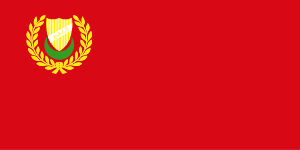
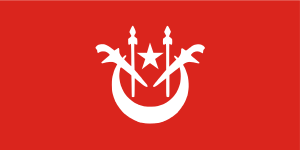
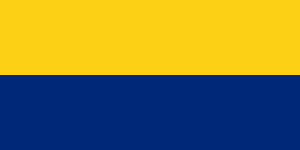
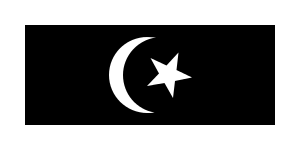


List of Yang di-Pertuan Agong
The following Rulers have served as Yang di-Pertuan Agong:
| № | Name | State | Reign | Birth | Death |
|---|---|---|---|---|---|
| 1 | Abdul Rahman of Negeri Sembilan | 31 August 1957 – 1 April 1960 | 24 August 1895 | 1 April 1960 (aged 64) | |
| 2 | Hisamuddin of Selangor | 14 April 1960 – 1 September 1960 | 13 May 1898 | 1 September 1960 (aged 62) | |
| 3 | Putra of Perlis | 21 September 1960 – 20 September 1965 | 25 November 1920 | 16 April 2000 (aged 79) | |
| 4 | Ismail Nasiruddin of Terengganu | 21 September 1965 – 20 September 1970 | 24 January 1907 | 20 September 1979 (aged 72) | |
| 5 | Abdul Halim of Kedah 1st Reign | 21 September 1970 – 20 September 1975 | 28 November 1927 | 11 September 2017 (aged 89) | |
| 6 | Yahya Petra of Kelantan | 21 September 1975 – 29 March 1979 | 10 December 1917 | 29 March 1979 (aged 61) | |
| 7 | Ahmad Shah of Pahang | 26 April 1979 – 25 April 1984 | 24 October 1930 | ||
| 8 | Iskandar of Johor | 26 April 1984 – 25 April 1989 | 8 April 1932 | 22 January 2010 (aged 77) | |
| 9 | Azlan Shah of Perak | 26 April 1989 – 25 April 1994 | 19 April 1928 | 28 May 2014 (aged 86) | |
| 10 | Ja'afar of Negeri Sembilan | 26 April 1994 – 25 April 1999 | 19 July 1922 | 27 December 2008 (aged 86) | |
| 11 | Salahuddin of Selangor | 26 April 1999 – 21 November 2001 | 8 March 1926 | 21 November 2001 (aged 75) | |
| 12 | Sirajuddin of Perlis | 13 December 2001 – 12 December 2006 | 17 May 1943 | ||
| 13 | Mizan Zainal Abidin of Terengganu | 13 December 2006 – 12 December 2011 | 22 January 1962 | ||
| 14 | Abdul Halim of Kedah 2nd Reign | 13 December 2011 – 12 December 2016 | 28 November 1927 | 11 September 2017 (aged 89) | |
| 15 | Muhammad V of Kelantan | 13 December 2016 – present | 6 October 1969 |
Election
The Yang di-Pertuan Agong is formally elected to a five-year term by and from the nine rulers of the Malay states (nine of the thirteen states of Malaysia that have hereditary royal rulers), who form the Conference of Rulers (Majlis Raja-raja). After a ruler had served as the Yang di-Pertuan Agong, he may not stand for election until all rulers of the other states have also stood for election.
In the event of a vacancy of the office (by death, resignation, or deposition by a majority vote of the rulers), the Conference of Rulers elects a new Yang di-Pertuan Agong as if the previous term had expired. The new Yang di-Pertuan Agong is elected for a full five-year term. After his term expires, the Conference holds a new election, in which the incumbent would not be re-elected.
The position de facto rotates among the nine Rulers. The selection of the Yang di-Pertuan Agong initially followed an order based on the seniority (calculated by length of reign) of each Ruler in 1957 at the Federation of Malaya's independence from the United Kingdom. The Conference of Rulers, which has the power to disqualify a candidate, has sometimes varied the original seniority order, as noted above. Minors are automatically disqualified from office.
The Conference of Rulers has met regularly since 1985. The four governors (Yang di-Pertua Negeri), or heads of states without hereditary rulers, also attend the Conference, but only Rulers are allowed to vote and stand for election as Yang di-Pertuan Agong.
Qualifications
- Only a Ruler may be elected.
- Only the Rulers may vote.
The Constitution provides that a Ruler is not eligible for election as Yang di-Pertuan Agong if:
- The Ruler is a minor.
- The Ruler has notified the Keeper of the Rulers’ Seal that he does not wish to be elected.
- The Conference of Rulers by a secret ballot resolves that the Ruler is unsuitable by reason of infirmity of mind or body, or for any other cause, to exercise the functions of the Yang di-Pertuan Agong. The resolution requires at least five members of the Conference to vote in favour of it.
Election proceedings
The election is carried out by a secret ballot. The ballot papers used are not numbered, but marked with the same pen and ink, and are inserted into a ballot box. Only the Rulers participate in the election.
A Ruler may appoint another Ruler as his proxy to vote on his behalf if he is unable to attend the Election Meeting.
During the election process, the Keeper of the Rulers' Seal distributes the ballot with only one candidate. Each Ruler is requested to indicate whether the candidate is suitable or not to be elected as Yang di-Pertuan Agong.
The most junior Ruler, who is not listed as nominee for the office of the Yang di-Pertuan Agong, or the Yang di-Pertuan Agong is appointed to count the ballot papers together with the Keeper of the Rulers' Seal.
The nominee must have obtained five votes before the Ruler presiding over the Election Meeting offers him the office of Yang di-Pertuan Agong. If the successful nominee declines the offer or the nominated Ruler fails to secure the required majority votes, the voting process is repeated with the nomination of the second most senior Ruler based on the list of Seniority of States. Rulers are named, and stand for election in turn.
The process is completed only after a Ruler has accepted the offer of the office of Yang di-Pertuan Agong. The Conference declares the Ruler as the Yang di-Pertuan Agong to hold office for a term of five years. The ballot papers are destroyed in the presence of the Rulers as soon as the result of the election is announced.
On taking office as Yang di-Pertuan Agong, he appoints a regent for the duration of his five-year term for the state which he rules. Usually, but not always, the regent is a close relative. The regent acts as head of state in that state for every purpose except for the role of head of Islam, which is retained by the Yang di-Pertuan Agong.
See also: Installation of the Yang di-Pertuan Agong for details of the installation ceremony
Order of seniority of states
Since the first cycle of nine Yang di-Pertuan Agong (1957–1994), the order among the eligible state rulers has followed the order established by that cycle, namely:

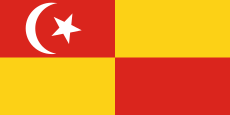







This cycle was originally established based on seniority. However, the current Rulers are named (and stand as a candidate) according to the cycle, irrespective of whether they are currently the most senior. Since independence from British Colonial Rule, this has been the order of elected Yang di-Pertuan Agong. However, the order is not a precedent and the election to the position of Yang di-Pertuan Agong is at the pleasure of the Conference of Rulers. As an elective monarchy, there is no line of succession to the throne of Malaysia.
Four of the states of Malaysia currently have no hereditary royal rulers. These are Penang and Malacca in Peninsular Malaysia and Sabah and Sarawak on the island of Borneo in East Malaysia. Sarawak previously had a hereditary ruler until it became a Crown Colony of the British Empire in 1946. These four states, along with Malaysia's three federal territories, never supply the Yang di-Pertuan Agong.
Timbalan Yang di-Pertuan Agong
The Timbalan Yang di-Pertuan Agong (Deputy Yang di-Pertuan Agong) is elected by the same process immediately after the Yang di-Pertuan Agong. The office is usually (but not always) held by the ruler next in line after the Yang di-Pertuan Agong. The Timbalan Yang di-Pertuan Agong exercises the functions of the head of state during the Yang di-Pertuan Agong's absence, or inability to exercise his functions due to illness or infirmity (similar to a regent in other countries).
The Timbalan Yang di-Pertuan Agong does not automatically succeed as Yang di-Pertuan Agong when a vacancy occurs in that office. The Timbalan Yang di-Pertuan Agong acts as head of state before the election of the new Yang di-Pertuan Agong and Timbalan Yang di-Pertuan Agong.
The current Timbalan Yang di-Pertuan Agong is Sultan Nazrin Muizzuddin Shah of Perak since 13 December 2016.[5]
List of Timbalan Yang di-Pertuan Agong
The following Rulers have served as Timbalan Yang di-Pertuan Agong as known as the Deputy Yang di-Pertuan Agong:[7]
| No | Name | State | In office | Birth | Death |
|---|---|---|---|---|---|
| 1 | Sultan Hisamuddin Alam Shah* | 31 August 1957 – 1 April 1960 | 13 May 1898 | 1 September 1960 (aged 62) | |
| 2 | Raja Syed Putra* | 14 April 1960 – 1 September 1960 | 25 November 1920 | 16 April 2000 (aged 79) | |
| 3 | Sultan Ismail Nasiruddin Shah* | 21 September 1960 – 20 September 1965 | 24 January 1907 | 20 September 1979 (aged 72) | |
| 4 | Sultan Abdul Halim Muadzam Shah* | 21 September 1965 – 20 September 1970 | 28 November 1927 | 11 September 2017 (aged 89) | |
| 5 | Sultan Yahya Petra* | 21 September 1970 – 20 September 1975 | 10 December 1917 | 29 March 1979 (aged 61) | |
| 6 | Sultan Haji Ahmad Shah Al-Mustain Billah* | 21 September 1975 – 29 March 1979 | 24 October 1930 | ||
| 7 | Tuanku Ja'afar* | 26 April 1979 – 25 April 1984 | 19 July 1922 | 27 December 2008 (aged 86) | |
| 8 | Sultan Azlan Muhibbuddin Shah* | 26 April 1984 – 25 April 1989 | 19 April 1928 | 28 May 2014 (aged 86) | |
| 9 | Tuanku Ja'afar* | 26 April 1989 – 25 April 1994 | 19 July 1922 | 27 December 2008 (aged 86) | |
| 10 | Sultan Salahuddin Abdul Aziz Shah* | 26 April 1994 – 25 April 1999 | 8 March 1926 | 21 November 2001 (aged 75) | |
| 11 | Sultan Mizan Zainal Abidin* | 26 April 1999 – 12 December 2006 | 22 January 1962 | ||
| 12 | Sultan Abdul Halim Muadzam Shah* | 13 December 2006 – 12 December 2011 | 28 November 1927 | 11 September 2017 (aged 89) | |
| 13 | Sultan Muhammad V* | 13 December 2011 – 12 December 2016 | 6 October 1969 | ||
| 14 | Sultan Nazrin Muizzuddin Shah | 13 December 2016 – present | 27 November 1956 |
* Denotes those who became the new Yang di-Pertuan Agong, immediately following the end of their tenure as Timbalan Yang di-Pertuan Agong
Roles
The Yang di-Pertuan Agong's role is that of a constitutional monarch. The Federal Constitution and Parliamentary Acts made in accordance with it define the extent of his powers as the Federal Head of State.
The monarch's powers are basically divided into two broad categories:
- the powers that he exercises on the advice of the Prime Minister, a Minister, the Cabinet, the Conference of Rulers, or some other officer or institution; and
- the powers that he exercises at his discretion (without the consent of any other authority).
The Constitution vests the executive power of the federal government in the monarch. However, with few exceptions, he is bound to exercise this power on the advice of the Cabinet or a minister acting under the Cabinet's general authority. Thus, in practice, most of the actual day-to-day work of governing is performed by the Cabinet.
The discretionary powers of the Yang di-Pertuan Agong pertain chiefly to appointing the Prime Minister, withholding consent to dissolve Parliament, and calling meetings with the Conference of Rulers "concerned solely with the privileges, position, honours and dignities of Their Royal Highnesses." Under the Westminster System, the Yang di-Pertuan Agong is expected to appoint a Prime Minister who will command the confidence of a majority of the elected lower house of Parliament, the Dewan Rakyat. Should the Prime Minister be or become unacceptable, he may be forced out by a vote of no confidence, which would require the Yang di-Pertuan Agong to dissolve Parliament on advice of the Prime Minister, or refuse to dissolve Parliament and appoint someone else as Prime Minister. Conventionally, the Prime Minister is the head of the party with a majority in Parliament. This was the Barisan Nasional (National Front, formerly known as the Alliance) from independence in 1957 until 2018, when Pakatan Harapan took office.
The Yang di-Pertuan Agong renews the appointment of a Prime Minister after every general election until the minister decides to step down. Whenever the Prime Minister chooses to dissolve Parliament, he calls for a general election. The Yang di-Pertuan Agong may choose to refuse a Prime Minister's request to dissolve Parliament, as one of his discretionary powers.
Residences
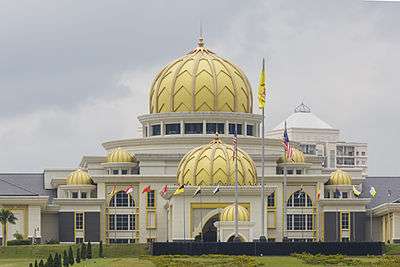
The official residence of the Yang di-Pertuan Agong is Istana Negara (the State Palace) located in Jalan Duta in the federal capital Kuala Lumpur. It was completed in 2011. The old Istana Negara will be turned into a royal museum. Other residences include the royal retreat, Istana Melawati (Melawati Palace) in the federal administrative capital Putrajaya. It is also the venue of meetings of the Conference of Rulers (Malay: Majlis Raja-raja), which elects the Yang di-Pertuan Agong.
Appointments
The Yang di-Pertuan Agong appoints numerous high-ranking office holders in the Federation under the terms of the Constitution and various Acts passed by Parliament. The constitution established procedures for such appointments.
The Council of Ministers (Cabinet)
- Prime Minister as the Chairman of the Cabinet, at his discretion from among the elected members of the House of Representatives who commands the support of the Dewan Rakyat – usually the party or coalition leader.
- Deputy Prime Minister, Ministers and Deputy Ministers, while acting on the advice of the Prime Minister.
- Chief Secretary to the Government as the Secretary of the Cabinet, while acting on the advice of the Prime Minister.
Commissions and committees
- The Election Commission, on the advice of the Conference of Rulers.
- The Judicial and Legal Service Commission, after consultation with the Chief Justice
- The Malaysian Public Service Commission at his discretion, after considering the advice of the Prime Minister and after consultation with the Conference of Rulers.
Judges
- The Chief Justice of Malaysia, on the advice of the Prime Minister and the Conference of Rulers.
- The Chief Judge of Malaya, on the advice of the Prime Minister and the Conference of Rulers.
- The Chief Judge of Sabah and Sarawak, on the advice of the Prime Minister and the Conference of Rulers.
Senators
The Yang di-Pertuan Agong appoints 44 members of the Dewan Negara, the Malaysian Senate.
State governors
The Yang di-Pertuan Agong appoints the Yang di-Pertua Negeri (Governors), of the states of Penang, Malacca, Sabah and Sarawak, at his discretion, after considering the advice of the state's Chief Minister.
The Yang di-Pertuan Agong also appoints the Mayor and City Council of Kuala Lumpur, which is a Federal Territory.
Head of Islam
In addition, the Yang di-Pertuan Agong is the Head of Islam in the four states ruled by appointed Governors, in the three Federal Territories, as well as in his own state. In this role, he is advised by the State Islamic Affairs Council in each of the States.
The Yang di-Pertuan Agong appoints the chairman and members of each council. He also appoints the State Mufti in each of these states. There is a single Islamic Affairs Council with jurisdiction for the three Federal Territories. This council is also appointed by the Yang di-Pertuan Agong.
Duties as Commander-in-Chief
In accordance with Article 41 of the Federal Constitution, the Yang di-Pertuan Agong is Commander-in-Chief of the Federation's Armed Forces. As such, he is the highest-ranking officer in the military chain of command.
As the Supreme Commander of the Malaysian Armed Forces, the Yang di-Pertuan Agong appoints the Chief of Defence Forces, on the advice of the Armed Forces Council. He also appoints the service heads of each of the three branches of the military forces.
King's Birthday
The first Saturday of June yearly is mandated by law as the Yang di-Pertuan Agong's official birthday. It is marked with various activities all over the nation and the celebrations in Kuala Lumpur are the highlights of the national festivities, with the celebrations of it from 2013 onwards lasting a whole week between two weekends.
After the installation of Sultan Muhammad V as King in 2017, the date for the official birthday was amended twice, first to the last Saturday of July,[8] and then to the second Saturday after Hari Merdeka.[9] This amendment will take effect under the rule of Sultan Muhammad V until 2021.
King's Birthday Honours List Ceremony and Birthday High Tea
The Istana Negara in Kuala Lumpur serves as the venue for the annual King's Birthday Honours List and Address to the Nation ceremony attended by the Yang di-Pertuan Agong and the Raja Permaisuri Agong, members of the Federal Government and Parliament, the state diplomatic corps, honoured guests and the Honours List members for the year, in the order of precedence of state medals. The event honours the year's national achievers and heroes with the awarding of state orders, medals and decorations and their accompanying titles. The King addresses the whole nation via radio and television on this day from the Throne Room of the palace complex. It is followed later by the traditional holiday high tea gathering at the palace grounds in the afternoon.
Trooping the Colour
Trooping the Colour in Malaysia, although inherited from the British, has transformed into a grander and more Malaysian celebration on the first Saturday of June annually live on Kuala Lumpur's Independence Square, which is both open to invited guests and the general public. As the Supreme Commander of the Malaysian Armed Forces, the Yang di-Pertuan Agong takes the salute on this day together with the commanders of the three services of the Malaysian Armed Forces, the Joint Forces Command, Malaysia and the members of the Malaysian Armed Forces Council, of which he is the chairman, plus military personnel and veterans in attendance. He wears the No.1 dress uniform on that day, and as each of the 8 state monarchs are Colonel-in-Chief of selected Malaysian Army regiments as well as of the Royal Malaysian Air Force and the Sultan of Selangor serves as Commodore-in-Chief of the Royal Malaysian Navy, he wears that regiment's coloured sash as part of his ceremonial uniform (for the Army), or the RMAF blue or RMN white no.1 dress uniform. The 2013 edition was held on the 2nd Saturday of June for the first time in its history, the 2016 parade was held on the 4th Friday of July (22 July) for the first time in Putrajaya, the national seat of government.
Several features distinguish the Malaysian ceremony from other similar ones:
- The Malaysian Royal Armoured Corps's Mounted Ceremonial Squadron plus members of the Royal Malaysian Police and selected members of the Royal Military Police Corps of the Malaysian Army provide the Sovereign's Escort for the ceremony. The MCS's fanfare trumpeters sound a fanfare upon the Sovereign's arrival in the Merdeka Square Saluting Base while the MCS itself also has a motorised mounted escort troop and a lancers guard troop ready to accompany them on the way.
- Instead of being just purely an infantry activity the entire Malaysian Armed Forces go out in full participation in this parade, as seen in the 4 Guard Companies and the National Defence University Band or the Armed Forces Central Band participating in the ceremonial march past.
- An open top Land Rover is used in the inspection segment of the parade.
- The Saluting Base in Independence Square was built to be longer in order for more invited guests and the public to attend the ceremony and take the salute.
- All the commands and salutes are said in Malay, like Hormat DiRaja (Royal Salute), Hormat Perdana (Prime Minister's Salute), Hormat Sedia (General Salute) and Hormat Timbalan (Deputy Prime Minister's Salute).
- The roles of Field Officer, Brigade Majors (the parade has two instead of 1, which is another unique feature), Adjutant and Ensigns are occupied by select officers of the Armed Forces, either Army, Navy or Air Force officers, with Armed Forces NCOs doing the jobs of Regimental Sergeants Major and Colour Sergeants. However the Deputy Brigade Major (coming from either service) is also the concurrent co-commander of the first parade unit, that of the Joint Escort for/to the Colours, which has 5 Regimental Sergeants Major with the rank of Warrant Officer 2 or Warrant Officer 1 while the three other units have 3 officers and 2 Warrant Officers each
- All Warrant Officers in this parade, like their British counterparts, carry pace sticks but the WOs of No.1 Guard Company (Composite) throw them to the Orderlies during the Trooping segment, another unique feature
- State Flypast by 5 military helicopters of the Flag of Malaysia, Flag of the Malaysian Armed Forces, and Flags of the Malaysian Army, Royal Malaysian Navy and Royal Malaysian Air Force during the performances of Negaraku, the National Anthem during the ceremony
- 21-gun salutes are performed during the National Anthem and during the inspection proper by a select battery from the Royal Artillery Regiment, Malaysian Army
- Negaraku in its abbreviated form is also performed during the colours obtainment segment by the Joint Escort for the Colors, which becomes the Escort to the Colours after the Colours Party join the Escort
- In the Islamic traditions of the Armed Forces, prayers are done after the marchpast ends.
All three branches of the Armed Forces – the Malaysian Army (represented by the Royal Malay Regiment, the Royal Armoured Corps and others), the Royal Malaysian Navy, and the Royal Malaysian Air Force – participate in the Trooping, in their No. 1 uniforms. The band in attendance is either the Central Band of the Armed Forces or the Band of the National Defence University.
The Colours Party and the Escort for (to) the Colours also reflect the three participant Armed Forces branches. The Colours Party is composed of Ensigns, Colour Sergeants and assistant soldiers making up three Colours Parties from the Army, and there is also a single Colour Party each from the Navy and the Air Force. The Escort for (to) the Colours is a composite company, comprising an Army platoon and a squad each from the Navy and Air Force ready to receive their respective colours during the ceremony. The Parade Field Officer, Brigade Major and Adjutant are also from all the Armed Forces branches, and so too are the Regimental Sergeants-Major and Colour Sergeants.
RTM broadcasts this unique ceremony live, with the telecast starting at 8:50 in the morning with a nationwide simulcast.
Details of the Trooping
- Parade forms up near the National Flagpole at Merdeka Square
- March in of the bands, linemen and Markers
- March in of the parade, the Brigade Major and Adjutant
- Arrival of the Field Officer
- Hand over of command to the FO
- Uncasing of the Royal Colours
- Parade stands at ease in preparation
- Salutes
- Commander's Salute
- General Salute
- Ministerial Salute
- Deputy Prime Minister's Salute
- Prime Minister's Salute
- Arrival of the Sovereigns and first Royal Salute with 21-gun salute by the Royal Artillery Regiment, Malaysian Army and first State Flypast by helicopters of the Royal Malaysian Air Force carrying the Flag of Malaysia, the Armed Forces Flag and the flags of the Army, Navy and Air Force
- Parade Inspection: Menjunjung Duli is played during the inspection by the military band and the 21 gun salute continues on till the Massed Bands stop playing the slow march as the Yang di-Pertuan Agong inspects the line of troops on the field
- Trooping and Marchpast of the military band on the parade field, in both slow and quick time, led by the Drum Major and the Directors of Music of the Central Band of the Armed Forces
- At the advice of the FO, the Drum Major orders the commencement of the trooping of the Massed Bands and the slow march, and as the bands approach the Sovereigns the Drum Major and the Directors of Music salute them, followed by another salute to the Royal Colours before it begins counter-marching and making the transition to quick time
- During the quick march, a lone drummer from the Massed Bands marches away and goes into the No.1 Guard, and when the music stops he beats the Drummer's Call
- Trooping Proper
- Joint Escort for the Colours prepares for the march after the Drummer's Call ends and when the drummer marches back to the military band. All the SMs' pace sticks are removed using a single throw (another unique feature of the ceremony) and are then given to the orderlies so that they can draw and use their swords. The FO then tells the Joint Escort to shoulder arms and the rest to stand at ease.
- Joint Escort marches in quick time to the Joint Colours Party to receive the Colours, as ordered by its company commander.
- Handover of the Royal Colours to the RSMs
- Slow March of the Colours Party and the RSMs happens and then the Ensigns, after saluting and returning their swords, receive their Royal Colours from the RSMs. The FO then orders the parade at attention and shoulder arms.
- Second performance of the National Anthem (in abbreviated form) and while the anthem is played, the Joint Escort and the Colours Party present arms as ordered and 4 NCO's standing at the corners of the Escort at the same time port their arms turning in a 45° angle as symbolic maximum security for the Colours to be received, and after the music ends they shoulder arms
- Joint Escort becomes the Joint Escort to the Colours, and the Colours Party join the company, thus merging them with the Joint Escort now that the Colours are in their full possession.
- The Joint Escort begins its slow march for the Trooping, marching towards No.4 Guard, with the band joining them
- The FO commands the parade to present arms when the Joint Escort begins its trooping
- Trooping of the Joint Escort in slow time, accompanied by the Central Band of the Armed Forces
- After the Colours have been trooped in slow time, the Joint Escort halts in place, turns about, and then presents arms as ordered. After this, the parade is told to shoulder arms by the FO, signalling the end of the Trooping proper itself.
- Marchpast
- The FO tells the parade officers, the Colours and WOs to take post
- The parade executes a right form after which, to the tune of the military bands, it does an about turn to the right while forming divisions
- The FO, with the parade now in position, commands the slow march.
- Slow March Past: The FO leads the units in the slow time march. By now, all units do the complex Left Form manoeuvre upon reaching the corners of the parade field. The parade salutes with swords and eyes right, and for No.1 Guard the Ensigns, by then at the front, do the "flourish" (on the eyes right) and "recover" (on the eyes front) for the Royal Colours in the presence of Their Majesties and the high command, which salute them and the entire parade. Neutral marches start and end the segment.
- Quick March Past: This time, the parade salutes on the eyes right only, no colours are lowered since there are now at the rear and Malaysian patriotic marches and other neutral marches commence and end the segment. When the 3 services and all four companies are recognised and do eyes in front of the Sovereigns and the officers present their eyes right salutes their respective service march (Malaysian Army: Gagah Setia, Royal Malaysian Navy: Samudera Raya, Royal Malaysian Air Force: Perwira di Angkasa) or the Malaysian Armed Forces March is played by the Central Band
- After the marchpast and the companies have halted, the FO orders yet another march to divisions at the front with the tune from the bands (the halts are followed by applauses by the audience), and the officers and Colours are told to take posts again afterwards followed by another dressing
- Parade Finale
- The FO orders the parade to advance in review order and as it halts he orders the parade to order and change arms
- The FO orders the parade to render three cheers of Daulat Tuanku (Long Live The King) to the His Majesty the Yang di-Pertuan Agong, who acknowledges their shouts
- As the Master of Ceremonies announces the prayer, drum rolls signal the parade to stand in prayer as a representative of the Armed Forces Religious Corps leads the parade and the audience in prayer, with drum rolls ending the segment and the parade told to change arms again
- Final Royal Salute, Flypast and departure of the Sovereigns
- Casing of the Royal Colours
- March off of the formation, band and line men
Yang di-Pertuan Agong Scholarship
In November 2006, the 10th Yang di-Pertuan Agong awarded, for the first time, the Yang di-Pertuan Agong Scholarship to ten outstanding students to pursue postgraduate studies at high-ranking world universities. The award of scholarships was held at the Istana Negara in conjunction with the Independence Day celebrations and the Conference of Rulers.[10]
Immunity
In 1993, amendments to the Malaysian constitution removed the legal immunity of the Yang di-Pertuan Agong and the rulers in their personal capacity, due to public outrage over their behaviour.[11] A Special Court (Makhamah Khas Raja-raja) is established where civil and criminal proceedings can be made against a ruler with the approval of the Attorney General. The right to sue a ruler is limited to Malaysian citizens following a precedent. The Special Court also have jurisdiction where a ruler initiates legal actions against any party.
When a ruler is charged with an offence in the Special Court, he is required to stop exercising the functions of a ruler. In the event of a ruler being sentenced to imprisonment for more than one day, he will cease to be a ruler unless a free pardon is granted.[12]
The Yang di-Pertuan Agong or any ruler cannot pardon himself or his immediate family. In such case, they may request clemency from the Conference of Rulers.
The Yang di-Pertuan Agong cannot be sued in court for his actions while carrying out his official duties. Any claims can be made against the federal government.
Royal Standards
The Royal Standard of the Yang di-Pertuan Agong is royal yellow with the Coat of arms of Malaysia in the centre, surrounded by a rice paddy wreath. The same goes for the Royal Standards of the Raja Permaisuri Agong and the Timbalan Yang di-Pertuan Agong, but the designs are different. The Raja Permaisuri Agong's standard is green in colour, with the coat of arms at the centre surrounded by the paddy wreath. The Deputy Yang di-Pertuan Agong's standard is bicolored, yellow at the top and light blue at the bottom, with the coat of arms at the centre (without the paddy) and below that is the office bearer's title.
Royal style
| Styles of The Yang di-Pertuan Agong | |
|---|---|
| Reference style | His Majesty |
| Spoken style | Your Majesty |
| Alternative style | Tuanku |
Formal address to the Yang di-Pertuan Agong is taken seriously in Malaysia. There are two ways of addressing the Yang di-Pertuan Agong:
- Malay: Tuanku (literally 'My Lord')
- English: Your Majesty
List of living former Yang di Pertuan Agong
| Name | State | Term of office | Date of birth | Remarks |
|---|---|---|---|---|
| Sultan Haji Ahmad Shah | 1979-1984 | 24 October 1930 (age 88) | the 7th Yang di Pertuan Agong Sultan of | |
| Tuanku Syed Sirajuddin | 2001-2006 | 17 May 1943 (age 75) | the 12th Yang di Pertuan Agong Raja (King) of | |
| Sultan Mizan Zainal Abidin | 2006-2011 | 22 January 1962 (age 56) | the 13th Yang di Pertuan Agong Sultan of |
The most recently deceased former Yang di Pertuan Agong was ![]()
See also
References
- ↑ "Malaysia king: Sultan Muhammad V sworn in". BBC. 13 December 2016.
- ↑ Powers of the king.
- ↑ Constitutional Crisis, Crisis of 1983
- ↑ Royal Ark
- 1 2 "Kelantan Sultan will be new King". The Star. 14 October 2016. Retrieved 14 October 2016.
- ↑ "April 24 declared public holiday to celebrate King's installation". The Star. 3 April 2017. Retrieved 5 April 2017.
- ↑ Senarai Timbalan Yang di-Pertuan Agong
- ↑ "King's official birthday moved to last Saturday of July". The Star (Malaysia). 26 April 2017. Retrieved 9 June 2018.
- ↑ "PMO: Agong's official birthday moved from July 29 to Sept 9". The Star (Malaysia). 13 July 2017. Retrieved 9 June 2018.
- ↑ "10 Students Awarded The Yang Di-Pertuan Agong Scholarship 2006", Bernama, accessed 11 August 2009
- ↑ "Malaysian democrats pin their hopes on the country's royals". The Economist. 26 January 2017. Retrieved 4 February 2017.
- ↑ "Test case on right to sue Sultans" (20 August 2008), The Star, accessed 29 November 2011
Further reading
- Visu Sinnadurai, "His Majesty Sultan Azlan Shah: The Yang di-Pertuan Agong IX Malaysia", The Supreme Court Journal, Kuala Lumpur, ISSN 0128-066X. (Special issue to commemorate the installation of His Majesty Sultan Azlan Shah as the Yang di-Pertuan Agong IX Malaysia, with a lengthy description of the functions of the office)
External links
| Wikisource has original text related to this article: |